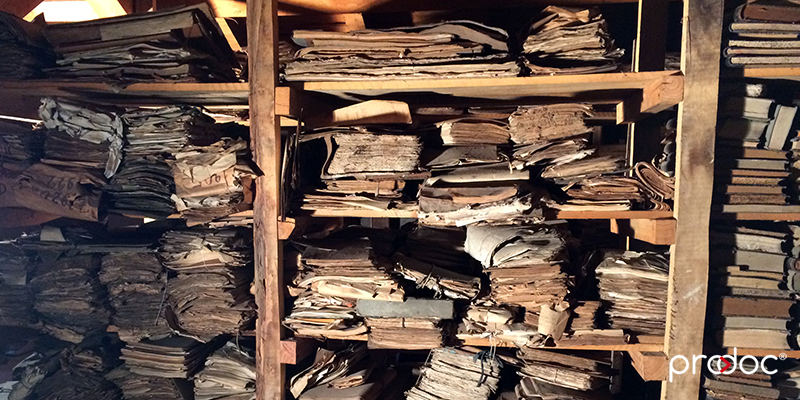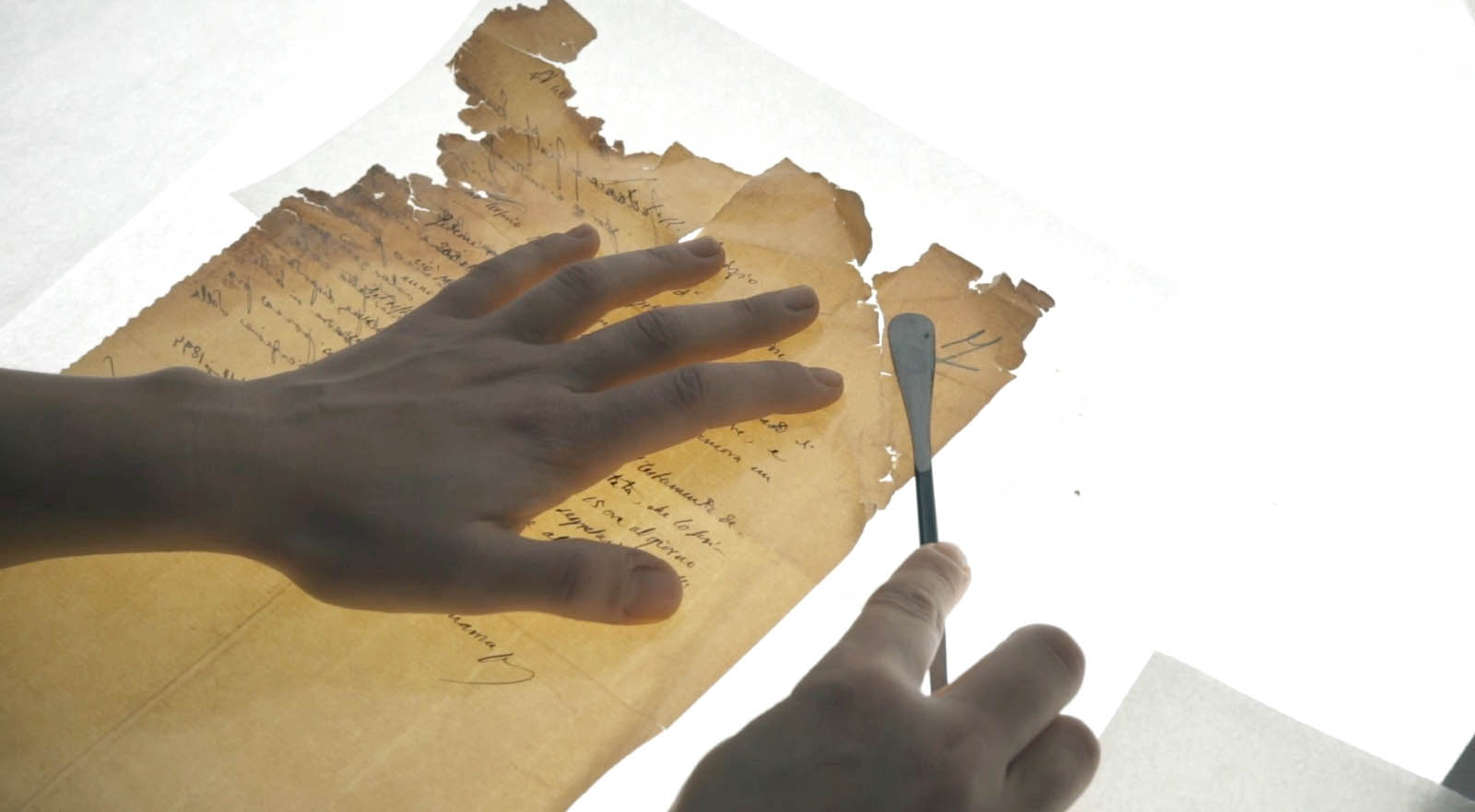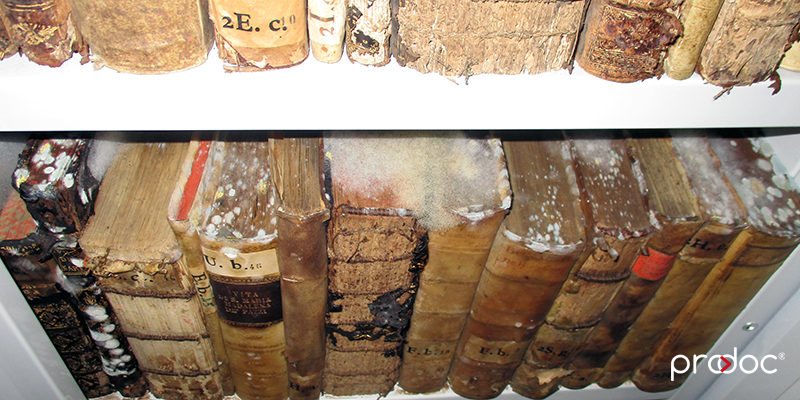Physical degradation, resulting from profound structural changes in the composition of the basic substances of archival and book material, derives from three main factors: light, heat and humidity.
These three elements act gradually and in depth, and their effect is often noticeable only when it causes an advanced degenerative state in the material, which is often a symptom of an irreversible condition.
In this article we will talk about:

Exposure to light rays
All organic substances of animal and vegetable origin react substantially to the action of light, often even resulting in modifications of their basic structure: in particular, the fibers lose their strength and their resistance when they undergo intense and prolonged exposure to ultraviolet rays and light electromagnetic waves.
This type of action has very serious repercussions on archival materials, which can even suffer profound damage to their basic nature by incurring irreversible processes.
The most common damages deriving from the exposure of archival material to light rays are the weakening of the fibers and the modification of the pigmentation: prolonged exposure to light sources, even not directly aimed at books and volumes, can cause dehydration of the pages, with a consequent loss of resistance to mechanical stress, and a yellowing of the paper, due to the oxidation of its fundamental components and the loss of strength of the cellulose fibers.
The most harmful luminous agents are usually sunlight, direct and indirect, and artificial light rich in ultraviolet rays: an institute for the conservation of documentary material must be equipped with devices that allow to shield the radiations coming from outside, through curtains and UV screens, but must also be internally illuminated only and exclusively by artificial lamps that are not harmful to the documentary material.
The action of light, even when shielded or produced by appropriate light sources low in ultraviolet radiation, has in any case a substantial role on the aging processes of books and volumes, and its action must therefore be limited by avoiding subject the materials to be protected to prolonged or sudden light exposure, trying to keep the lighting of the storage room as weak and constant as possible.
Therefore, spaces without openings to the outside and illuminated only when necessary by dim devices and poor in ultraviolet radiation are preferable as storage rooms for archival material.

Exposure to heat and humidity
The other two agents of physical degradation, heat and humidity, cause the most considerable damage when they act together and have a profound effect on the state of conservation of archival and book material.
Deterioration is due to many factors linked to these two agents and, depending on the conditions in which they operate and the characteristics of the place where the material is stored, they can cause very different reactions with significant consequences on the state of conservation of the goods: damage higher are due to the combination of very high values of temperature and relative humidity and to sudden fluctuations of one or both of these variables.
The sudden variability of temperature or relative humidity values, or even worse of both, has disastrous consequences on the conservation of a documentary asset: just consider that a fluctuation of a value greater than 5 degrees centigrade causes double damage compared to what it would occur at a stable temperature; in the same way, every time the relative humidity values double, the life expectancy of an asset is halved.
The question arises mainly from the fact that the documentary material is composed of hygroscopic substances, which absorb the water particles present in the environment in conditions of high relative humidity, and release them in conditions of low relative humidity: for this reason , when the relative humidity increases, the water content inside the materials also increases which, in turn, causes an expansion reaction of the particles causing mechanical and structural damage to the documents.
A high moisture content inside the material, combined with high temperature values, also increases the probability of incurring biological damage, exposing the material to microbiological, fungal attacks and infestations by insects.
Furthermore, it is necessary to consider that, usually, the archives contain assets of a very different nature, and that each material has specific needs regarding the optimal environmental conditions for its conservation: for this reason, it is practically impossible to be able to establish values of temperature and relative humidity that are ideal for the maintenance of all the materials contained within the institute.
It is necessary to find a compromise and identify a range of quantities within which the damage to all the different categories of goods is minimized: the literature of the sector is rich in specific and accurate analyzes for the identification of these conservation values, which they are recognized almost unanimously around 18-20 degrees centigrade in temperature, and around 45% relative humidity.
Within this range of values, physical and biological damage due to temperature and humidity on documentary materials is minimized.

Monitoring of new acquisitions
Particular attention should be paid to the new acquisitions of volumes, books and other documents to be included in the collections of the institute: it is possible that these materials come from places and structures not specifically responsible for their conservation and that, for this reason, have already been subjected to fluctuations or conditions that are harmful to their maintenance.
It is therefore always necessary to proceed with an accurate analysis of the assets that will have to be included in the conservation institute, as well as of the assets that have been temporarily transported to another place for loan purposes or temporary exhibitions, to ensure the their state of affairs and to be able to deal with their gradual reintroduction within the spaces in which they will be permanently placed.





